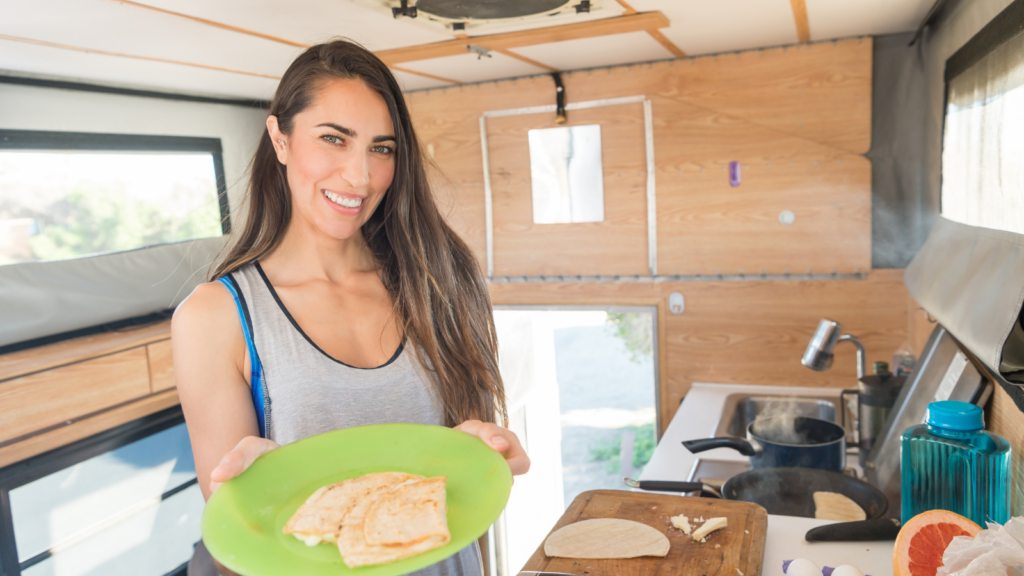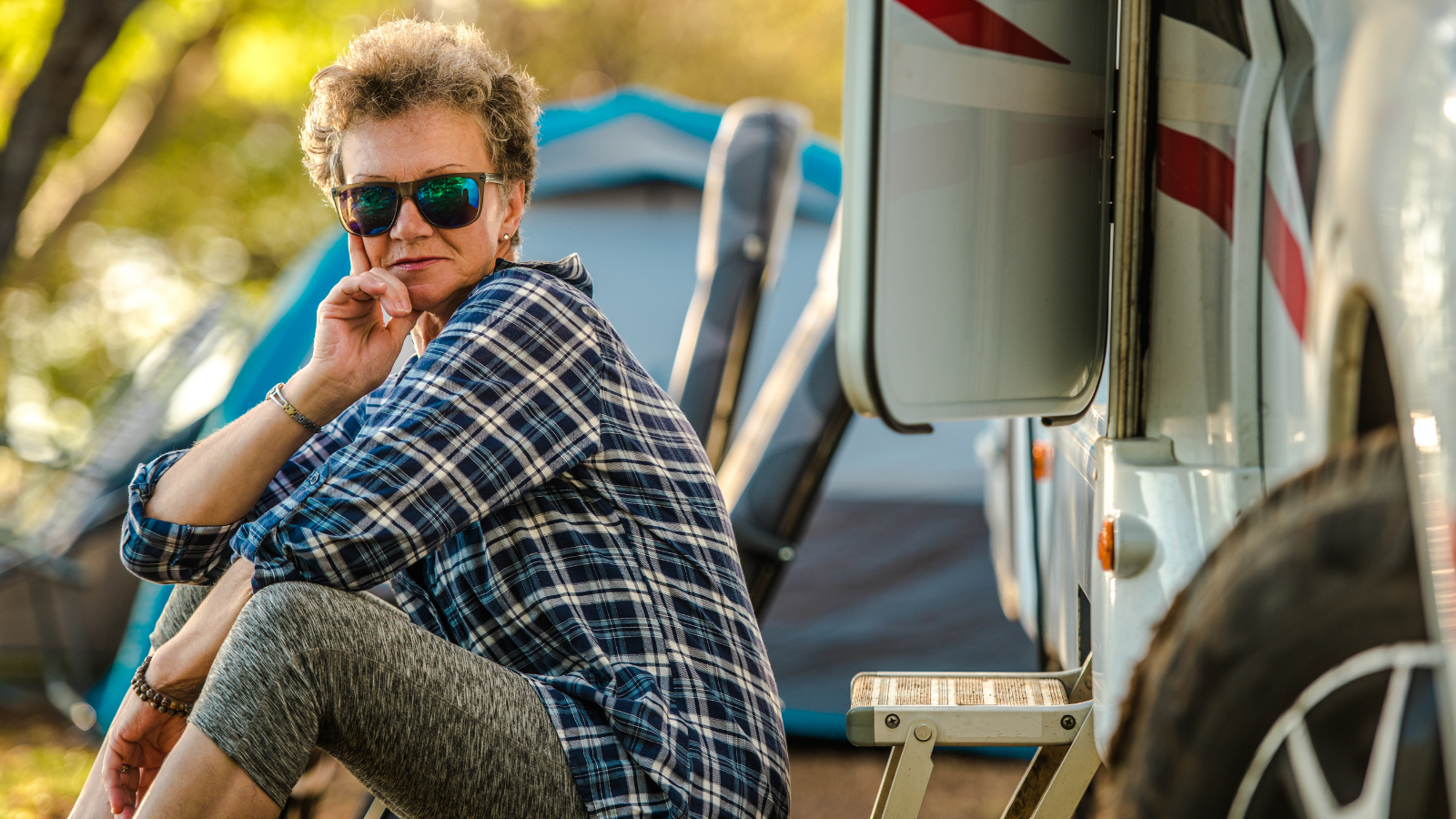It’s not uncommon to hear of men embarking into the wilderness alone. It’s not infrequent for a family to take an RV vacation. As the RV lifestyle is for everyone, many women share the dream of hitting the road, having more freedom, seeing the sights, and living more simple lives – either on their own or with female friends.
Do you share that dream? If you do and you haven’t made it a reality yet, there are some different, important considerations for women who travel and camp alone or in a small group.
Choose an RV.
This is the biggest decision for any RV owner. You should ask yourself, what is your anticipated lifestyle and how often do you plan to use the RV? There is an RV for every type and you should know your preferences before you search for an RV. For example, visit national parks? Live in it seasonally? To spend weekends camping? To travel at will? You also need to determine a budget for the purchase of an RV – or financing – and get an idea of what expenses look like when you’re using the RV (this could help). Another question to ask yourself is, are you looking for something just for yourself or more than one person? Consider RV amenities also, storage space, and whether you prefer to drive or tow your RV. Many female RVers start out with campervans or lightweight towable trailers. If towing, is your current vehicle rated high enough to pull it along?
Have confidence.
There are many women RVers who started out saying, “I could never do that by myself,” “I’m not adventurous enough,” the list goes on. Get the naysaying out of your head. What you need is practice, and over time RVing will feel as comfortable as your favorite shoes.
In the beginning, get to know your RV – these tips will help – how it drives, and how its systems work. Maintain your tow vehicle (if you have a towable RV) and get it checked before your first trip out. Learn how to change a tire, if you don’t know how to do so already. When you go on your first trip, stick closer to home near places you’re familiar with; there’s plenty of time to widen your radius.
There will be tough times, bad weather, shaken confidence, and dashed hopes. That’ll happen wherever you are, wherever you go, and wherever you live. It’s important to not be discouraged, give yourself a little grace, and to go after your dream.
Plan your stays and your stops.
All RVers are savvy planners. This includes picking your route, being aware of low clearances and construction along the way, where you plan to stop for gas (plan to fill up with at least a quarter of a tank left) or to see the sights along the way, dump stations, and more. Get to the campground with plenty of daylight left so that you can set up camp more easily and get used to your surroundings. The biggest thing is to take your time and be flexible with your plans. An RV allows this flexibility. When traveling, it may be best to plan for shorter driving days, as it takes mental energy and alertness to drive an RV – especially if it’s windy or there’s other inclement weather. Plus, you want to have enough energy in reserve to set up and prep a meal once you arrive.
Pack light, pack right.
Camping is about simplicity and about being prepared. You don’t want you find yourself in a precarious situation. There are some items you should carry at all times: navigation tools/equipment, stored fresh water, flashlight and headlamp, first-aid kit, extra light bulbs, blankets, cooking supplies for over a fire, portable stove (if the RV doesn’t have one included), a couple days’ worth of food, matches, extra vehicle fluids, fire extinguisher, jumper cables and RV manuals (in an accessible place). Everything in the RV should have a function; there isn’t room for a lot of fluff. Here are some other items to add to the packing list.

Keep safety in mind.
Trust your gut. Avoid rest stops that aren’t very populated, and carry mace or pepper spray on your person as well as in an accessible location in your RV or two vehicle. Some RVers stay in parking lots or truck stops overnight, but it’s probably safer to make a reservation at a campground. Traveling with other campers is another way to add a layer of safety; this way, everyone can check in on one another.
Join a group.
Even if you’re traveling solo, it’s important to still have fun, adventure, and friendship. So, join a group. For many ladies, that group is RVing Women. According to the website, the “only international support network solely for woman RVers. Founded in 1991, we have more than 2000 members. Some travel alone, and others go together or in small groups. Our interests are diverse, but we share the common cultural experience of being female.” There are chapters across the U.S. and Canada, many of which hold rallies during the high season. Another group is Sisters on the Fly – the largest outdoor women’s group in the United States with a crafty side. There are membership dues for both groups, as well as lots of planned gatherings and events that all members are invited to experience. You can find a lot of valuable information on the Women RV forum as well. Community is essential, not just for camaraderie, but for sharing information, helping one another, and teaching skills. You can learn from someone else’s experience, plus make some lifetime friends.
RV camping and traveling can open up new possibilities for women, present new experiences and challenges, develop friendships, and enrich their lives. Make your dream a reality; there’s never a bad time to start.

